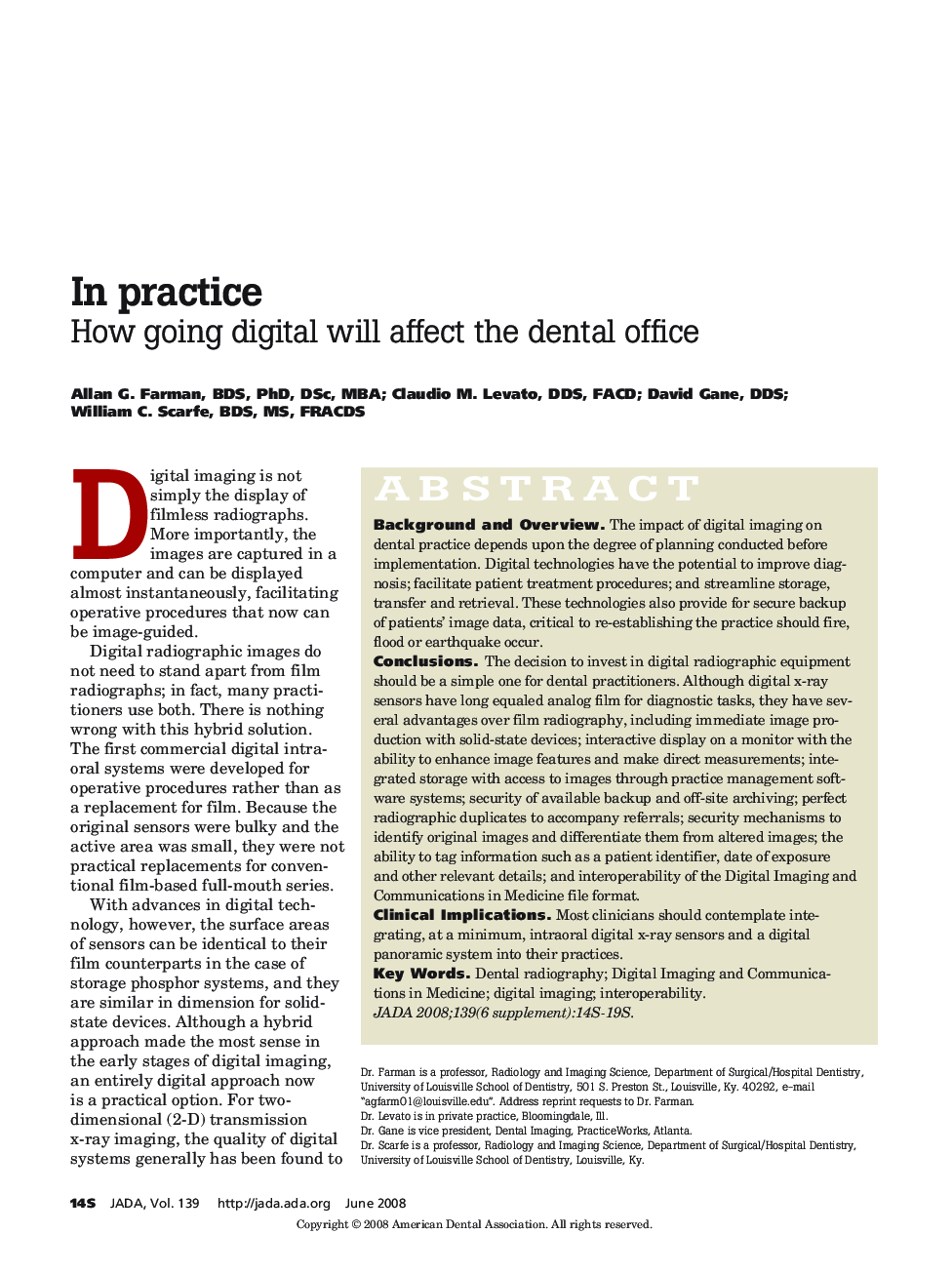| Article ID | Journal | Published Year | Pages | File Type |
|---|---|---|---|---|
| 3139738 | The Journal of the American Dental Association | 2008 | 6 Pages |
ABSTRACTBackground and OverviewThe impact of digital imaging on dental practice depends upon the degree of planning conducted before implementation. Digital technologies have the potential to improve diagnosis; facilitate patient treatment procedures; and streamline storage, transfer and retrieval. These technologies also provide for secure backup of patients' image data, critical to re-establishing the practice should fire, flood or earthquake occur.ConclusionsThe decision to invest in digital radiographic equipment should be a simple one for dental practitioners. Although digital x-ray sensors have long equaled analog film for diagnostic tasks, they have several advantages over film radiography, including immediate image production with solid-state devices; interactive display on a monitor with the ability to enhance image features and make direct measurements; integrated storage with access to images through practice management software systems; security of available backup and off-site archiving; perfect radiographic duplicates to accompany referrals; security mechanisms to identify original images and differentiate them from altered images; the ability to tag information such as a patient identifier, date of exposure and other relevant details; and interoperability of the Digital Imaging and Communications in Medicine file format.Clinical ImplicationsMost clinicians should contemplate integrating, at a minimum, intraoral digital x-ray sensors and a digital panoramic system into their practices.
